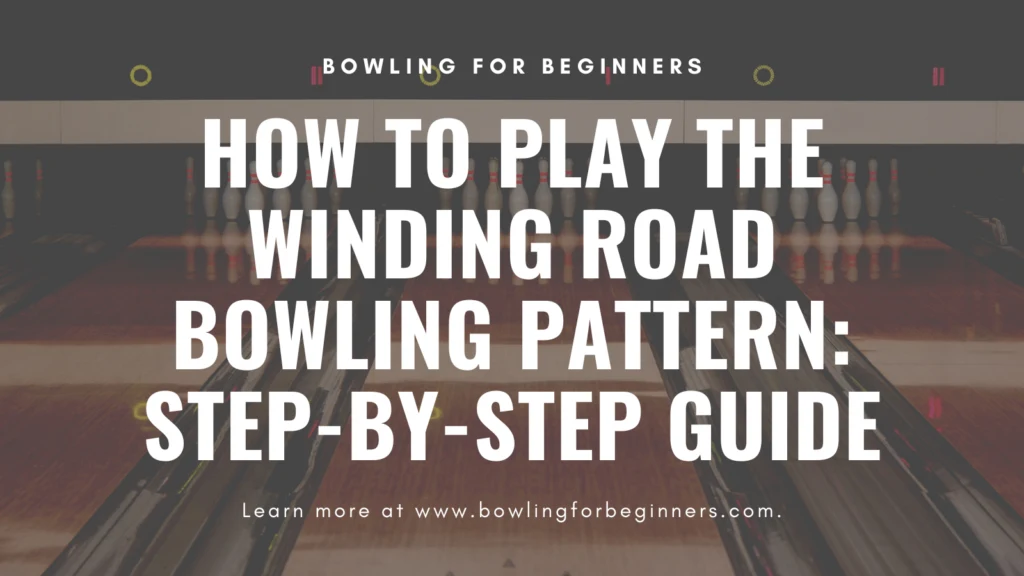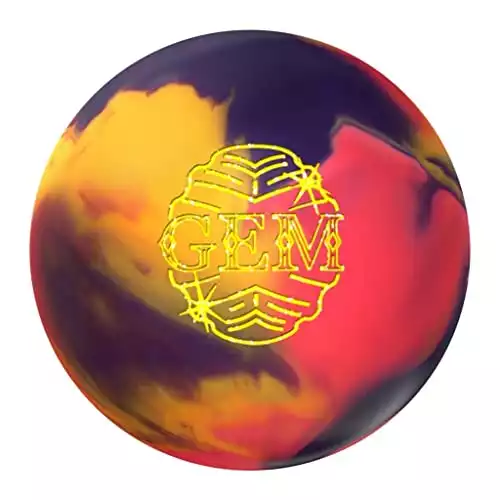
The Winding Road bowling pattern has tripped up many a bowler, from novices to pros. So, if you’re new to the pattern, you need all the help you can get. Luckily, you’re in the right place; the information we’ll share with you in this article will be beneficial.
We’ll explain the basics of the oil pattern and what you need to do to score well on it. But, if you’re totally green when it comes to bowling, you might not know what an oil pattern is. In short, it’s how the lane oil is distributed. Its pattern affects how your ball reacts when it rolls down the lane.
Some bowling oil patterns are longer (cover more of the lane’s length) than others, and some are noticeably shorter. The oil pattern may also differ in the middle of the lane versus the beginning or end. That’s what makes oil patterns unique.
There’s also forward oil and reverse oil. Forward oil means the oil was applied starting at the foul line and going toward the pins. The reverse oil is just the opposite; it begins at the pins and goes back toward the foul line. The direction the oil is applied will also affect your ball’s trajectory.
The oil patterns you play on at your local bowling alley are usually pretty standard. They don’t vary too much from lane to lane. But when you start bowling in tournaments, you’ll see that there can be some significant differences from one tournament lane to the next.
Contents
Winding Road Oil Pattern- What Is It
The Winding Road oil pattern is one of the most popular Kegel patterns. Kegel is the company that makes the machines that condition bowling lanes, so they know a thing or two about oil patterns!
Winding Road V1
The first version of the Winding Road is a 39-foot pattern that utilizes 22.45 ml of oil, with 12.10 ml of forward oil and 10.35 ml of reverse oil.
It’s got heavy combined oil up the middle of the lane up to about the 15-foot mark and then reverse oil from the 4-foot mark to the 14-foot mark all the way to the gutters. Then it tapers in from the 14th foot to the 30-foot mark, and the pattern is buffed out from there.

Winding Road V2
The second version of the Winding Road pattern is also 39 feet long. It utilizes 26.7 ml of oil in total, with 16.35 ml of forward oil and 10.35 ml of reverse oil.
The oil is very heavy at the beginning, with combined oil from the foul line to the 25-foot mark. After that, there’s a bit of reverse oil until the 39-foot mark. Of note is the fact that there’s a sizeable amount of reverse oil for about the first 30 feet of the pattern.

How to Play on the Winding Road Pattern
The short answer is that the Winding Road pattern makes it difficult to get into the pocket. The long answer is- it’s complicated. Let’s take a more in-depth look at how this pattern will affect your game and what you need to do to get your ball into the pocket for some strikes.
Rule of 31
The first thing you should do when faced with a new pattern is work out the rule of 31. Under this rule, you’ll subtract 31 from the total length (distance) of the oil pattern to get your breakpoint. The breakpoint in bowling is the point where your ball starts to make its turn toward the pocket.
Both Winding Road patterns are 39 feet long, so we would subtract 31 from 39 to get 8. This means that your breakpoint should be at the 8 board. That’s where you need to try to get your ball before it starts hooking toward the pins.
Adjust as Needed
You’ll need to adjust your target on the lane accordingly. If you’re used to aiming at the 10 or 11 board, you’ll need to adjust your target for the Winding Road pattern. The 8 board will be your new go-to spot.
Other Tips to Keep In Mind
In terms of playing on the pattern, there are a few things you should keep in mind:
- Choose your ball wisely. Because there is so much oil at the beginning of both Winding Road patterns, you’ll need to use a ball that can get through all of that oil and then explode on the back end. Great example is the It’s a reactive ball with some weight on it (14-16 pounds if your frame can handle it).Bowling for Beginners may receive compensation if you make a purchase using this link, at no additional cost to you.
- Open up the pattern with straight rolls. The first thing you should do when you get on the lane is make some straight shots. You need to open the pattern a bit before you can start hooking the ball. If you hook it too soon, your ball will roll into the gutter.
- Be patient. Don’t be afraid to take your time and make some adjustments. With such a tricky pattern, it might take you a few frames (or games) to get everything down pat. Try different angles. If you’re struggling to get your ball into the pocket, try different angles and stances. You might need to come in more from the inside or the outside to find success.

Is the Winding Road Pattern for Beginners?
The Winding Road pattern is a real challenge, even for seasoned bowlers. So, if you don’t yet have the basics down, this pattern is probably not for you. You’ll need a pretty good understanding of bowling before tackling the Winding Road.
If you’re just starting out, we recommend trying an easier pattern like the House Shot or Easy Street. These patterns will give you a chance to refine your skills without a ton of gutter balls.

Pros and Cons of Winding Road Pattern
The Winding Road pattern comes with some obvious pros and cons, and you’ll need to know all of them to see if you should give it a try.
Pros
- The Winding Road pattern provides a real challenge for even the most experienced bowlers. If you’re looking for a real test, this is the pattern for you.
- This pattern can be a great way to improve your game. If you’re struggling with a particular aspect of your bowling, the Winding Road pattern can help you identify and fix those issues.
- Because this pattern is so challenging, it can be very rewarding when you finally conquer it.
Cons
- The Winding Road pattern is not for beginners. If you’re just starting, you’ll want to steer clear of this pattern until you have many games under your belt.
- It can take a lot of time and effort to master this pattern. If you’re looking for an easy win, the Winding Road pattern is not it.

Where to Play on the Winding Road Bowling Pattern
Ready to give the Winding Road bowling pattern a try? It can be difficult to find a place to play on this pattern, as not all bowling alleys have it available.
However, if you call your local bowling alley ahead of time, they should be able to tell you if the Winding Road pattern is available.

Related Articles
So, there you have it – everything you need to know about Kegel’s Winding Road bowling pattern version 1 and version 2. We hope that you found this article helpful regardless of whether you decide to try it out.
Remember, the most important thing for beginners to do is to have fun on the lanes – expertise will come with time! Good luck!
Kira Byrd, a Certified Fraud Examiner, holds a B.S. in Accounting from the University of Alabama at Birmingham. With a passion for bowling from her childhood, Kira has poured her expertise and personal experiences into creating and nurturing Bowling For Beginners. Kira’s mission is to meet new bowlers where they are and guide them toward consistently achieving higher scores. With a focus on skill development and strategic techniques, she empowers readers to take control of their game and unlock their true potential.
Bowling For Beginners embodies strict editorial integrity, ensuring reliable and unbiased information. Kira’s commitment to delivering valuable insights and practical strategies is reflected in every article. Here’s an explanation of our editorial policy and how we get money.


